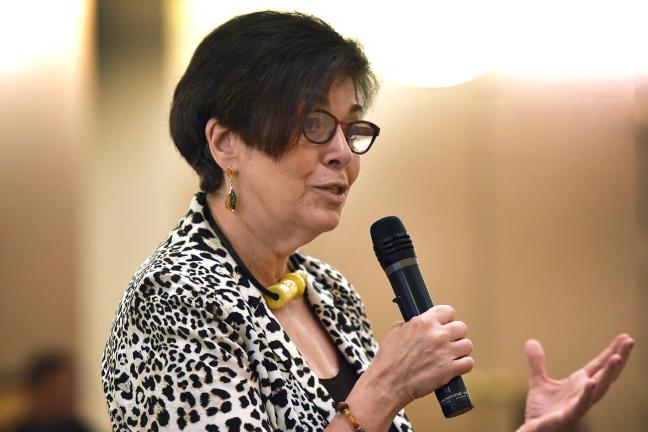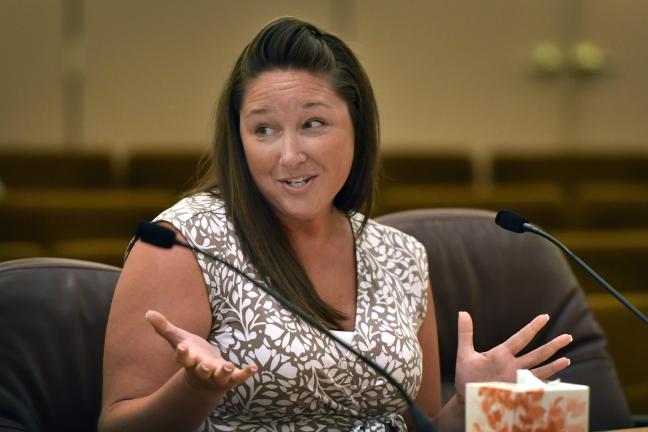Members of the Sellwood Bridge Project’s School-Based Outreach Program - which ends this winter - provided their last annual update to the Multnomah County Board of Commissioners on Thursday.
The program, which began four years ago, engages students in local elementary, middle and high school classrooms in the county’s largest construction project. The bridge project has served as a learning opportunity and a chance for students to explore careers in construction, engineering, design, and public service. More than 70 members of the project team have participated in school programs to date.
“This is an experience that students will never forget, whether they go into a construction trade or not,” says Commissioner Judy Shiprack. “It’s an experience that they are going to be articulating, and talking about, and maybe writing about.”
Lois Cohen, president of Lois D. Cohen Associates which coordinates the school program, spoke to the board, joined by project manager Amy Higgs. Two teachers from partnering schools, Teri Griffin and Sarah Long, also shared their experiences working with the program. Griffin teaches fifth grade at Faubion School in NE Portland, while Long is a second grade teacher at Alder Elementary School in SE Portland.
At Alder, which is a Title I school where 97 percent of students are on free or reduced lunch, Long says she was pleased with the reactions she got from her students.
“It was really inspiring for me to hear how students' goals had shifted to becoming an engineer, or an architect, or a contractor,” she says. “Girls wrote about wanting to run a construction company. Boys wrote about going to college to design solutions that made citizens’ lives better."
“The students walked away from it realizing that someone like an engineer is a real person, and that it’s an attainable position.”
The program has led to interactions with roughly 2,000 students spread over 13 schools in the area, with 75 classroom visits by project volunteers. School field trips to the bridge construction site were also arranged.
“Every school that we’ve been in has asked us to come back,” says Cohen, who has been involved with school-based programs in transportation projects across the state since 2006. “The request has always been to return.”
In the classrooms, Cohen and Higgs say that most of the activity is hands-on, giving students an opportunity to make model bridges, role play as characters such as public officials or local business owners and negotiate a budget or even take a field trip to survey the project site.
Benches built by students at the ACE Academy and Centennial High School will be a permanent part of the new Sellwood Bridge. Bat habitat boxes that students from Llewellyn Elementary School made will be installed under the new bridge once construction is complete.
For teachers such as Griffin and Long, the program gave real-life exposure to students and is beneficial in the long run, giving them an opportunity to widen their horizons.
“As young kids, they think they’re all going to be doctors, and lawyers, and superstars, and live in mansions. They don’t realize all of the things that are available to them,” says Griffin. “And to see all kinds of people involved in all this. Just in one small project -- to see how important all these jobs were and that they could make an impact on their community -- that was important."

